When Students Become the Teachers: Sandi Rudy and James Foster of Cushing Terrell share how to get a passing grade in the workplace of the future.
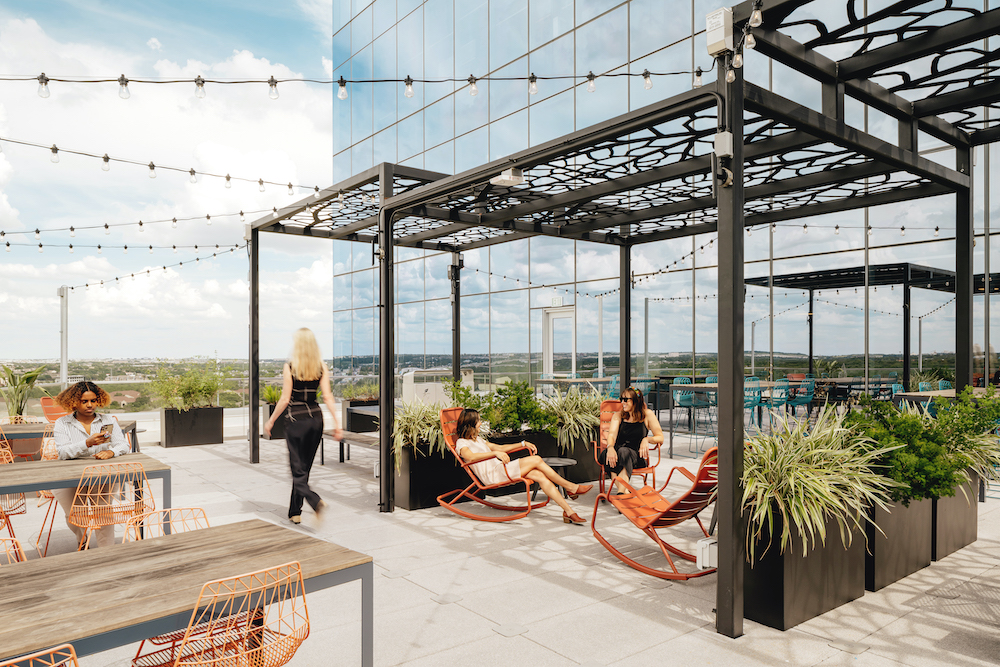
The typical pre-pandemic office design won’t get a passing grade in the workplace of the future. But there is hope for more positive performance marks. One path to improvement and getting knowledge-worker workplace design marks up from a hopeful C to a resonant A+ is to look to higher education facilities to glean valuable insights from what is working well there.
The U.S. Department of Education points to data collected before and during the pandemic shows that in-person learning results in improved academic outcomes, greater levels of student engagement, higher rates of attendance, and better social and emotional well-being. Translation: remote learning is not holistically optimal. This begs the question, what about remote work? Are these findings being applied to our workplace environments? As the workforce has become increasingly more remote, the leading discussion has been engaged employees and methods for sustaining productivity. But there’s so much more to making a workplace environment healthy, attractive, and accommodating with both social and emotional value.
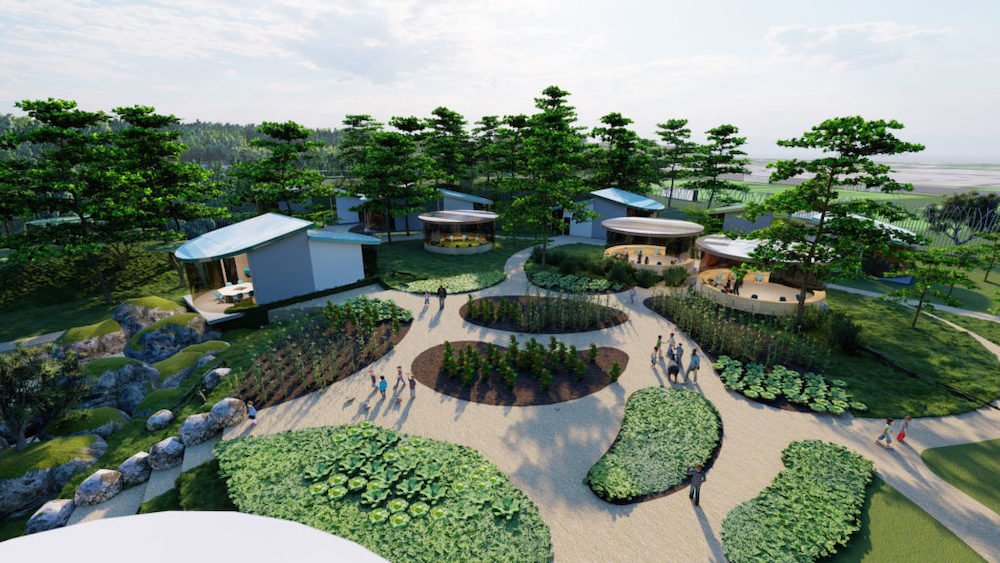
Helping Workplace Design Make the Grade
Following the onset of the pandemic, the notion of what makes for an optimal workplace environment shifted rapidly. Remote work accommodations have been made for most knowledge workers, so there is no longer an expectation or a ‘need’ to be in the office from 8:00-5:00 each day. Rather, employees are leveraging offices for specific tasks or purposes. Although not always, those often center around collaborative efforts with other employees or environmental factors e.g., a difficult face-to-face conversation; an active brainstorm session with a team; an important presentation that requires stable internet and no barking dogs; access to a specific tool or resource that is only available at the office.
Students have greater levels of engagement when they are attending school in-person. Their social and emotional well-being increases when they are in environments that are tailored to their educational journey. Similarly, studies have shown that people are more engaged when they are well supported by the workplace environment. Pre-pandemic, this included more amenity spaces, the use of outdoor spaces, better air quality and access to daylight and views. But overall, workplaces, as compared to education facilities, have been slow to adapt.
The targeted design solutions fast-tracked in k-12 and higher education facilities and include, among others, curated outdoor environments, improved mechanical and electrical systems, and flexibility and adaptability of special elements and furniture among others. And they have been successful.
Workplace design can learn from these successes and realize opportunities to apply similar design solutions to office spaces for happier, more creative, healthier employees. Greater emphasis on these shifting priorities, behaviors and tendencies in work life considerations is creating the opportunity for us to revise the lesson plan for office design. As opposed to designing for a pre-determined ‘square-feet-per-person’ and list of standard office spaces, designers are now considering all the various and diverse ways in which people may leverage shared office spaces. This rethinking is providing a perfect opportunity to leverage what we know has worked in education facilities to apply to new and existing workplace design concepts and solutions.
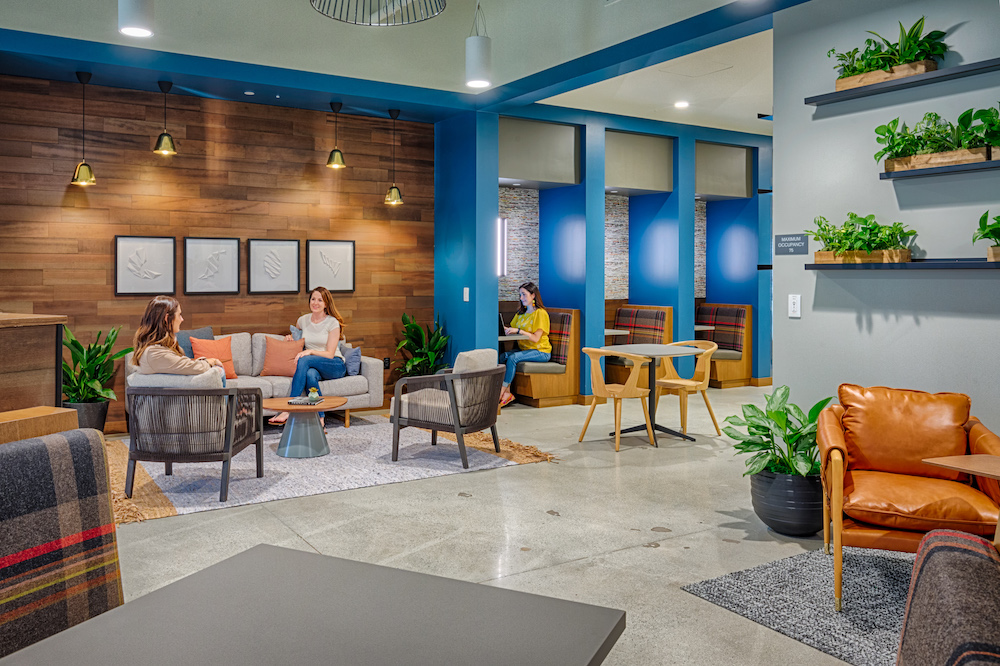
Moveable/flexible spaces
Collaboration and connection with team members is one of the most common requests of workers returning to offices. There is an increased need for flexible spaces that may support multiple functions in the course of the day. Learning from education environments, this is sometimes as simple as moveable furniture. Be it casters on tables and chairs, table shapes that easily nest together to create a larger surface when needed, and convenient solutions for storage of personal items furniture that can be moved and changed for an array of uses is a low-hanging fruit solution.
But flexibility can extend beyond just furniture. Designing spaces for multiple functions is a way to maximize cost per square foot in an office space. This might include, for example, a breakroom designed with booths and tables equipped with acoustic separation and access to power so that it might serve as a short-term workspace for employees who need a place to land between meetings; or a training room with movable tables, chairs, markerboards and privacy dividers that would allow the one large room to be split into smaller collaboration spaces when needed. It is also important to consider space adjacencies when planning for flexibility and adaptability; can two adjacent small meeting rooms be combined to create one large meeting room if the need arises? Can a large meeting room be divided to create an enclosed smaller room and an adjacent breakout collaboration space?
The workplace situation continues to fluctuate and change, and as a result, we must design spaces that can change with the times, with the need, and with employees.
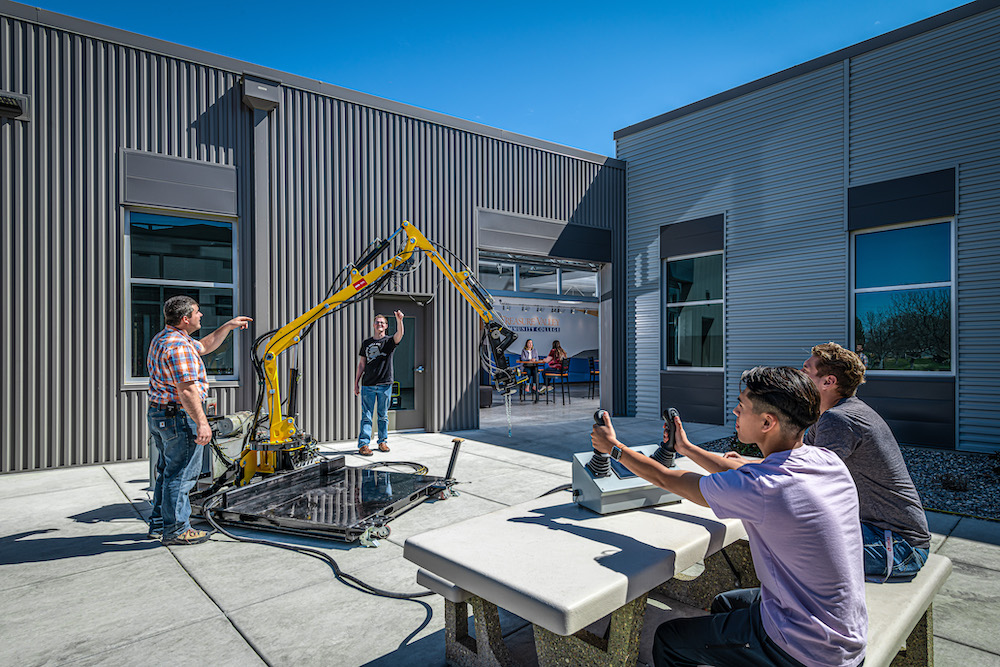
Intentional outdoor environments
For decades, education facilities have been utilizing outdoor spaces to fill a learning need. What are referred to as outdoor classrooms are designed not only to allow for open air experiences, but with designated spaces for students to sit, for an instructor to be seen by the class, and with surfaces to support typical classroom behaviors such as reading, writing, and the handling or observing of other physical tools and materials (papers, posters, books, calculators, etc.).
In the recent past, with the pandemic calling renewed attention to outdoor air and open-air environments, many offices have begun to emphasize the expansion, addition, or creation of outdoor spaces (and more importantly the intentional and functional use of these spaces) in their campuses and facilities. The design of these outdoor classrooms is now becoming the basis for which employers and designers are beginning to think about outdoor environments in the workplace. A great patio to sit and relax is a lovely amenity, but an outdoor space that allows for group meetings, collaboration, or productive focused work is real benefit. This is where thoughtful additions like specific seating arrangements, surfaces, and others found in outdoor classrooms may apply. Other considerations for outdoor workspaces may also include access to power and Wi-Fi to enable comfortable use of technology outside; careful study of sun locations and adequate shading, both for human comfort and the use of electronic devices with screens/monitors. Another factor, one that is often overlooked and somewhat unique to an outdoor office environment, is the need for privacy. Ideally an outdoor space is large enough for several activities to happen at one time, but a certain level of privacy is still needed for successful independent work and/or sensitive subject matter. On this matter, workplace design can not only learn from education design, but also from the possibilities afforded by thoughtful landscape architecture.
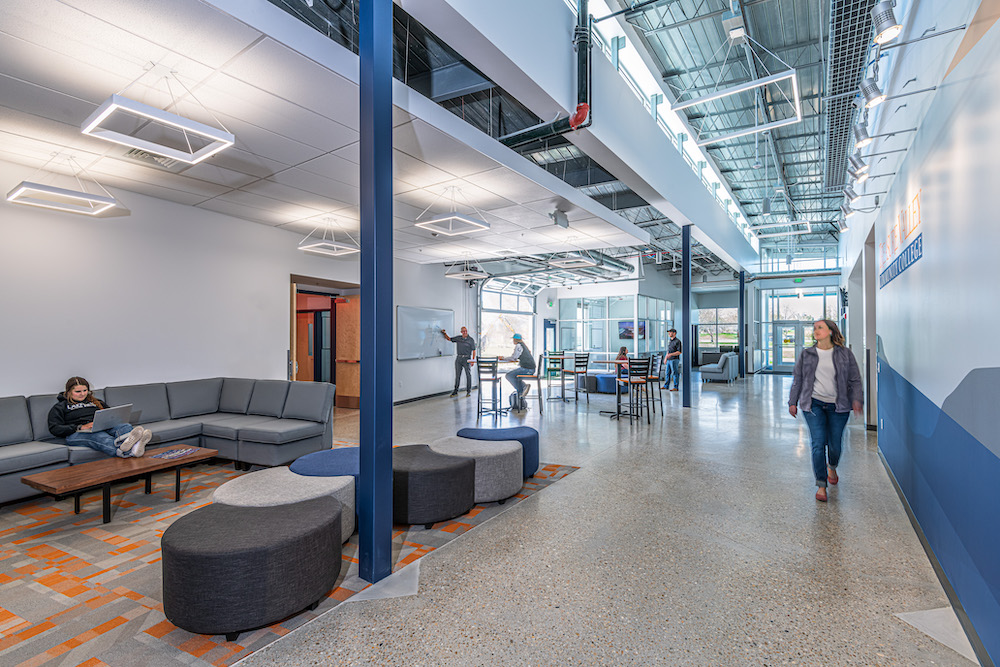
Improved mechanical and electrical systems
Schools have been among the industries to fast track the implementation of improved mechanical and electrical systems in response to indisputable evidence that increased outside air, better filtration, and intentional lighting control and levels have a positive impact on the wellbeing of students in a learning environment. Often, schools have the benefit of grants and other funding sources to act on this data.
In many, if not most, workplaces, these targeted systems upgrades have only been on the ‘nice to have’ list. The benefits of optimizing these systems have been proven in students both in overall wellbeing and basic performance metrics, so we would be remiss, as an industry to ignore this data. Improved indoor air quality, better temperature and lighting control, and an abundance of natural lighting are perhaps the best ways for a company to show their commitment to and investment in their employees’ health, happiness, and wellbeing.
In Conclusion
Our built environments are always changing and evolving, but now more than ever, workplace design is experiencing a major identity crisis. While the concept of “going to the office” is no longer standard practice for many, for some, it will always be the preferred, and for most, having the option is a giant plus. But in the interest of ensuring the evolving nature of knowledge work and knowledge workplaces keeps pace with employee needs, workplace design can find inspiration in education facilities with now proven solutions for improved wellness and increased overall performance. And with this new way of thinking, perhaps workplace design will once again take the grade.
Sources:

